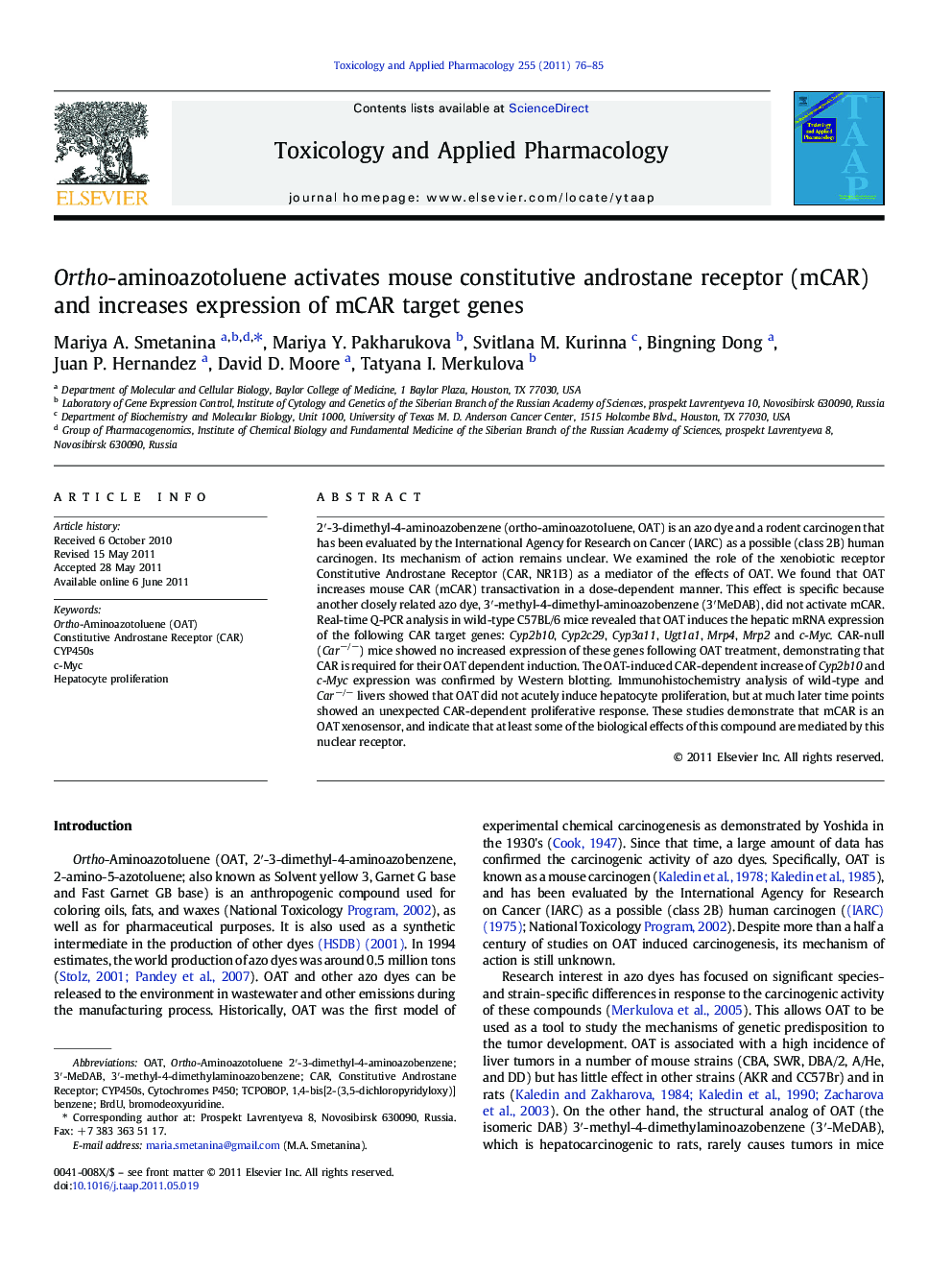| Article ID | Journal | Published Year | Pages | File Type |
|---|---|---|---|---|
| 2569496 | Toxicology and Applied Pharmacology | 2011 | 10 Pages |
2′-3-dimethyl-4-aminoazobenzene (ortho-aminoazotoluene, OAT) is an azo dye and a rodent carcinogen that has been evaluated by the International Agency for Research on Cancer (IARC) as a possible (class 2B) human carcinogen. Its mechanism of action remains unclear. We examined the role of the xenobiotic receptor Constitutive Androstane Receptor (CAR, NR1I3) as a mediator of the effects of OAT. We found that OAT increases mouse CAR (mCAR) transactivation in a dose-dependent manner. This effect is specific because another closely related azo dye, 3′-methyl-4-dimethyl-aminoazobenzene (3′MeDAB), did not activate mCAR. Real-time Q-PCR analysis in wild-type C57BL/6 mice revealed that OAT induces the hepatic mRNA expression of the following CAR target genes: Cyp2b10, Cyp2c29, Cyp3a11, Ugt1a1, Mrp4, Mrp2 and c-Myc. CAR-null (Car−/−) mice showed no increased expression of these genes following OAT treatment, demonstrating that CAR is required for their OAT dependent induction. The OAT-induced CAR-dependent increase of Cyp2b10 and c-Myc expression was confirmed by Western blotting. Immunohistochemistry analysis of wild-type and Car−/− livers showed that OAT did not acutely induce hepatocyte proliferation, but at much later time points showed an unexpected CAR-dependent proliferative response. These studies demonstrate that mCAR is an OAT xenosensor, and indicate that at least some of the biological effects of this compound are mediated by this nuclear receptor.
► The azo dye and mouse carcinogen OAT is a very effective mCAR activator. ► OAT increases mCAR transactivation in a dose-dependent manner. ► OAT CAR-dependently increases the expression of a specific subset of CAR target genes. ► OAT induces an unexpectedly deferred, but CAR-dependent hepatocyte proliferation.
